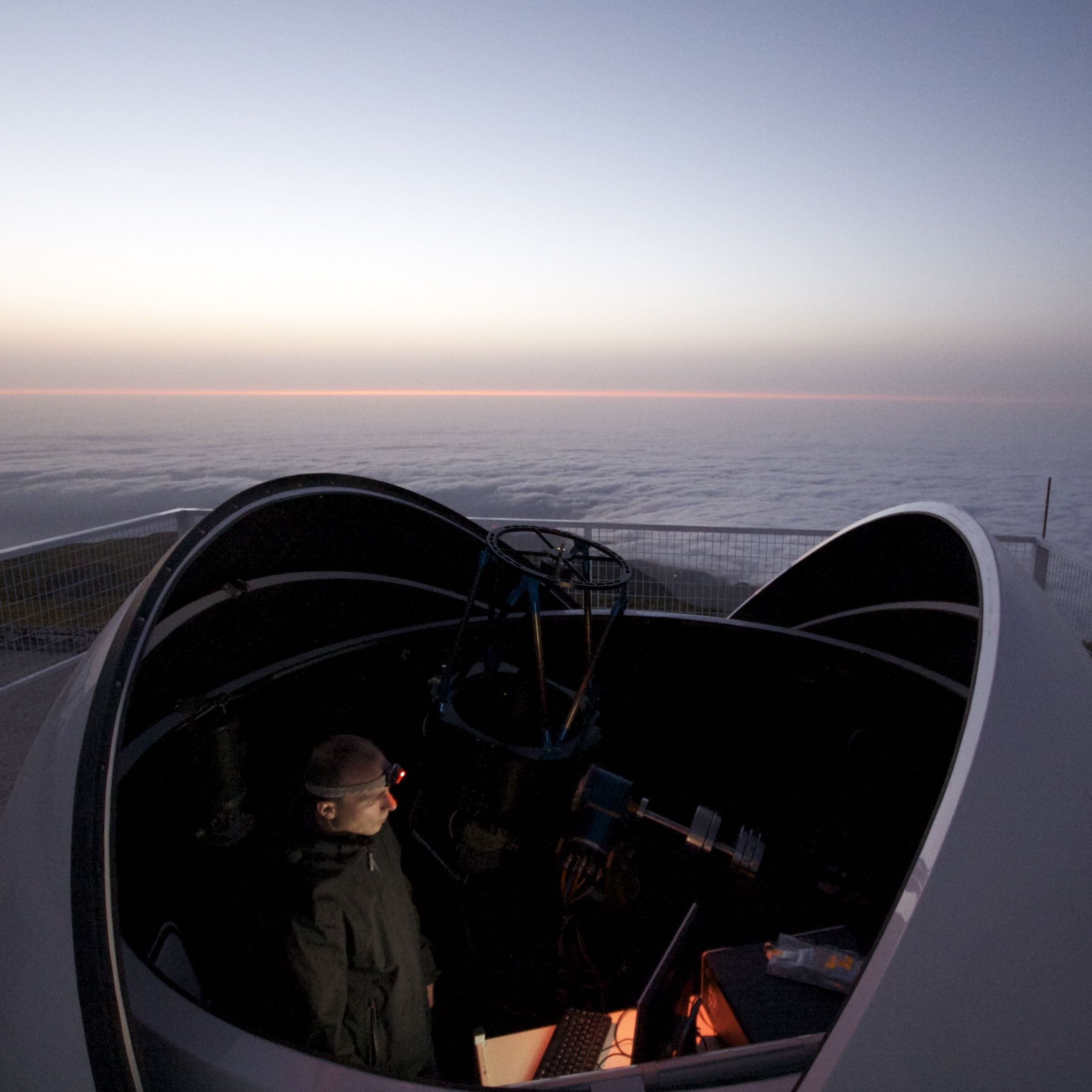Introduction to Cosmology
 Cosmology is the study of the origin and evolution of the Universe; it concerns the Universe as a whole, as opposed to the objects inside it. This lecture course starts by showing how, from a few basic assumptions, cosmologists develop models describing how various different types of universe evolve. Our focus then turns to our own Universe. We look at the origins of the Cosmic Microwave Background and why its measurement is so crucial to our understanding of the Universe, before considering the bizarre events that took place during the first few nanoseconds after the Big Bang. Finally, we explore how tiny quantum fluctuations in the distribution of energy at the very biginning of time led to the creation of clusters, galaxies, stars and, ultimately, us.
Cosmology is the study of the origin and evolution of the Universe; it concerns the Universe as a whole, as opposed to the objects inside it. This lecture course starts by showing how, from a few basic assumptions, cosmologists develop models describing how various different types of universe evolve. Our focus then turns to our own Universe. We look at the origins of the Cosmic Microwave Background and why its measurement is so crucial to our understanding of the Universe, before considering the bizarre events that took place during the first few nanoseconds after the Big Bang. Finally, we explore how tiny quantum fluctuations in the distribution of energy at the very biginning of time led to the creation of clusters, galaxies, stars and, ultimately, us.

 Galaxies are the building blocks of the Universe; cosmic factories in which stars are forged. We have learned a lot about galaxies in the century since it was first realised that the Milky Way was just one of many. This course aims to give a detailed overview of what we now understand about how today's galaxies formed and evolved. We first consider how technological developments have enabled astronomers to observe the intricate details of galaxies and how theorists attempt to simulate them in computer models. Next, we explore the formation of elliptical and spiral galaxies, and turn to the high redshift Universe to peer back in time to the earliest stages of galaxy formation. Finally, we look at the role that supermassive black holes have played in the evolution of today's galaxies.
Galaxies are the building blocks of the Universe; cosmic factories in which stars are forged. We have learned a lot about galaxies in the century since it was first realised that the Milky Way was just one of many. This course aims to give a detailed overview of what we now understand about how today's galaxies formed and evolved. We first consider how technological developments have enabled astronomers to observe the intricate details of galaxies and how theorists attempt to simulate them in computer models. Next, we explore the formation of elliptical and spiral galaxies, and turn to the high redshift Universe to peer back in time to the earliest stages of galaxy formation. Finally, we look at the role that supermassive black holes have played in the evolution of today's galaxies.
 Being able to plan and carry-out a set of astronomical observations is an important part of an observational astronomer's job. It is how we collect the data which forms the foundations of our theories of how the Universe and its constituent parts form and evolve. In this module you will plan a set of observations to conduct with our 0.5m-aperture telescope situated on La Palma. After choosing the focus of your project - such as measuring the star formation rates of nearby galaxies or the density of a minor planet - you will identify a suitable candidate and plan the measurements you will take. You will then submit these observation requests to the telescope, which will carry them out automatically when the conditions are suitable. On delivery of your data, you will process the images and analyse them to reach your scientific conclusions.
Being able to plan and carry-out a set of astronomical observations is an important part of an observational astronomer's job. It is how we collect the data which forms the foundations of our theories of how the Universe and its constituent parts form and evolve. In this module you will plan a set of observations to conduct with our 0.5m-aperture telescope situated on La Palma. After choosing the focus of your project - such as measuring the star formation rates of nearby galaxies or the density of a minor planet - you will identify a suitable candidate and plan the measurements you will take. You will then submit these observation requests to the telescope, which will carry them out automatically when the conditions are suitable. On delivery of your data, you will process the images and analyse them to reach your scientific conclusions.